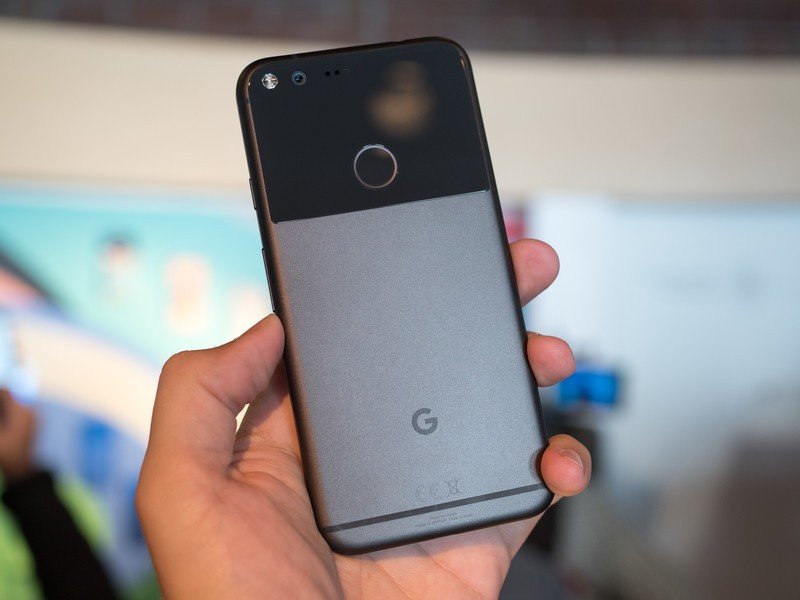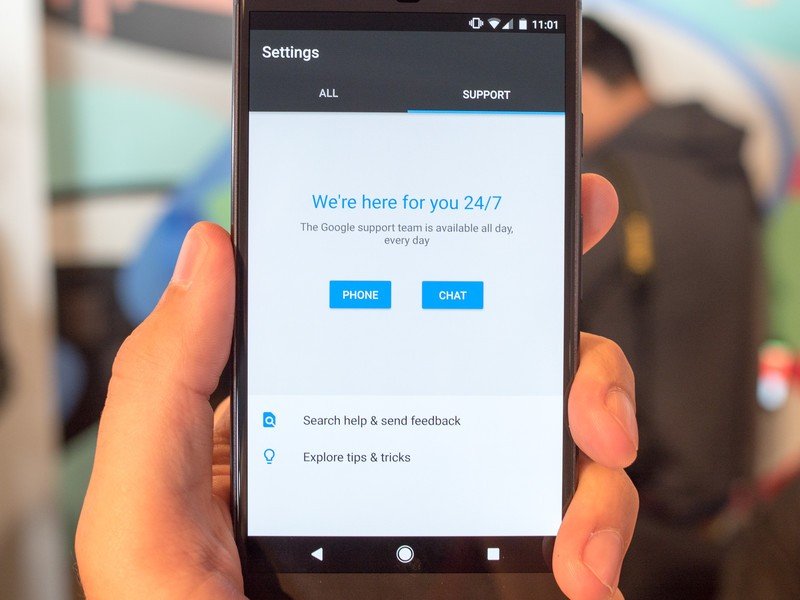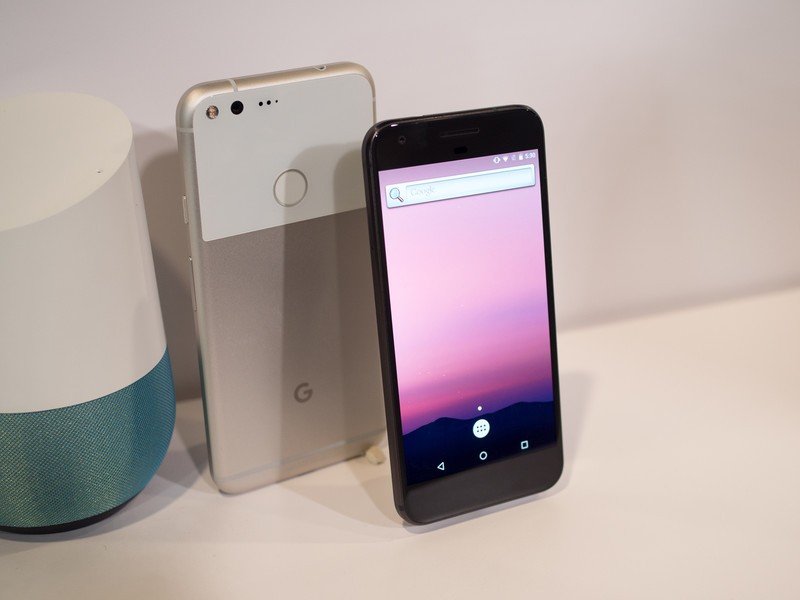Google Pixel and Pixel XL hands-on

There have been many "Google phones" over the years. In the run up to Android's announcement eight years ago, rumors swirled of a "gPhone" to take on the increasingly dominant iPhone. Fast forward 18 months and we had the Nexus program, starting with the Nexus One, a Google-branded sold direct to customers unlocked. Since then, Google has collaborated with many manufacturers to show its vision of what an Android phone should be — those partnerships have brought us eight wildly different "Google" Nexus phones.
And now there's Pixel — the first true Google phone, taking on the name we used to associate with its own Chromebooks. And just like those Chromebooks, the new Pixel and Pixel XL are designed from the ground up by Google, and launched today at an event in San Francisco. Join us as we take a first look at the first phones "made by Google."

Starting with the hardware
Let's start with the basics. After weeks of leakage, you probably already know that the Pixel comes in two sizes — a 5-inch regular Pixel and a 5.5-inch Pixel XL. And that they're powered by Qualcomm's latest Snapdragon 821 processor, with 4GB of RAM, and 32 or 128GB of non-expandable storage. That's standard high-end Android stuff.
More: Google Pixel + Pixel XL specs
On a basic physical level, we're looking at two rather pretty metal-bodied phones, and size-wise they feel just as you'd expect, with bezels that are hardly tiny. The regular 5-inch Pixel is a comfortable one-handed phone, while the larger XL will be easy to wrangle if you're used to bigger devices like the Nexus 6P — in fact they're nearly the same size. The screen is smaller than the 6P's, but there's also a lot less going on around the display, despite the presence of sizable top and bottom bezels. And for what it's worth, the Pixel XL is a bit easier to manage in the hand than the iPhone 7 Plus, which also uses a 5.5-inch display.





In both models, the slightly angled sides allow for an easy grip, and the bevelled edges break up what might otherwise be a monolithic metal design. Comparisons with the iPhone have been drawn, but these don't really play out in real life. The Pixels are more angular on the sides and back, even having a very slight wedge-like shape to them from top to bottom.
I can't find a flaw in this hardware design.
The back panel of both phones is flat, with a large, unique glass panel making up the top one-third of the phone, housing the fingerprint sensor dead in the middle and several holes up in the corner: an LED flash, camera, laser autofocus mechanism and a microphone. The glass pane makes the Pixels stand out, but at the same time it's another place to get gunked up with fingerprints, especially as you run your hand on it to get to the fingerprint sensor (now called Pixel Imprint).
Be an expert in 5 minutes
Get the latest news from Android Central, your trusted companion in the world of Android
The phones feel really solid, and those who like a smaller phone will rejoice at the quality of the smaller Pixel — but this standard is to be expected for a phone that starts at $649, like every other flagship out there.





Battery life will have to remain an unknown until we've spent more time with the Pixels, but based on the numbers alone things are looking pretty good. 3450 mAh to work with in the 5.5-inch Pixel XL should lead to solid battery longevity, though the 2770 mAh in the smaller 5-inch Pixel means you're unlikely to get more than a day per charge. Both will benefit from the new enhancements to Doze in Android Nougat, though, letting the phone spend more time sleeping throughout the day rather than awake and draining battery. The phones also have Google's Rapid Charging offering over USB-C, which can add (an admittedly ambiguous) "7 hours" of usage in just 15 minutes.
Get hyped about these cameras
I've only spent a little time with the Pixels shooting photos, but what I've seen has me extremely excited. On paper we're basically looking at the Nexus 6P's camera: a 12MP sensor with really big 1.55-micron pixels. But the important change this time around is speed — even with the great hardware in the Nexus 6P, the camera was slow ... that's just not the case anymore. The camera launches insanely quickly, and captures photos just as fast, in rapid succession.
HDR+ is fantastic, all it needed was speed. Now we have the complete package.
Google is so confident in its speed boost that HDR+ mode is now enabled by default, and it no longer has an extra-long shutter time or foreground processing — you can snap HDR+ photos like you would any other shot, and still benefit from the far superior image processing in the background. That's a huge deal, because while the Nexus 6P and 5X were solid performers, you really could only get great shots while in HDR+ — and now, that's the default experience and there's no performance hit to be seen.
Google's also touting its extensive software stabilization when recording video, which manages to smooth out otherwise-shaky shots into buttery smooth streams. There's a lot of behind-the-scenes work being done there, and it's really impressive.

A new take on Nougat
Being a Google phone, the software side is where things really get interesting. The Pixel phones run Android 7.1 Nougat, the first maintenance release of Google's OS. At the base level, it's similar to Android 7.0 on the Nexus 6P and 5X. But there are several visual tweaks and a few important feature additions that let the Pixels stand out from not only the crowd of Android phones out there, but also Google's own Nexus devices.
The first phone with Google Assistant at the center of the experience.
Right off the bat you'll notice a completely fresh take on the Google home screen, with the standard launcher eschewing separated dock, nav bar and app drawer areas for one fluid frosted bar at the bottom of the screen. You can put your most-used apps down there as before, but a simple swipe up anywhere on the bottom of the screen will bring up your app drawer. Those apps, you'll notice, are also circular. Well, at least Google's new apps — there aren't any restrictions put on developers to make their app icons circular, nor will Google force the icons into a circular shape in the software. The circular design might not jive with everyone, but chances are most people will forget about the difference quickly.
Further in visual changes, the Pixel and Pixel XL add a lot of light blue flourishes throughout the interface. All of the buttons, sliders and animations are the same as you'd find on Android 7.0 today, but blue highlights are used to distinguish buttons are portions of the interface that demand attention. Pair that up with lots of soft greys and translucency and it looks good altogether — it's all a bit more lively and friendly.



Every time you hit the freshly redesigned home button, you get a little hint that there's something more lurking behind it — press and hold, and you're now experiencing Google Assistant, baked right into the Pixel and Pixel XL — not unlike the old Google Now on Tap. The interface and experience are markedly different, though. The first thing Assistant expects is your voice — you simply ask it whatever questions you have, or jump straight into giving it commands to do anything you normally would with Google Search. Google Assistant is more powerful, of course, as it can look contextually at what's on your screen at that moment, or have a conversation based on previous questions or what it knows about you.
Google Assistant is something that takes time to experience in day-to-day life, but I can already see how it'll be more useful than the old Google Now on Tap paradigm. Having it integrated directly into the core software experience makes much more sense than just having it live in a silo inside Google Now or Allo.

More to come
This is just the tip of the iceberg with the brand new Pixels from Google, and we're going to be bringing you so much more once we get to spend more quality time with them. Externally, the hardware is very impressive — and it should be for the prices Google is demanding. Internally, you're getting all of the latest specs with few, if any, compromises. The cameras are extremely exciting, and are poised to be the best we've ever seen from a Google-backed phone.
For me, the biggest takeaway here is that Google has made two different sizes of the same phone — not two different phones as we experienced last year. You get the same exact experience whether you prefer the spacious Pixel XL or more compact Pixel, and that's just as big for the small phone fans as it is for those who want the large phone without any other compromises.
The Pixel and Pixel XL are already up for pre-order in some regions, and that's just as important as anything mentioned above. If you like these phones, you can just go out and buy them right now and have one delivered within a few weeks. Google's getting its act together here, and it's shaping up to be a great first effort in the "made by Google" world.
Andrew was an Executive Editor, U.S. at Android Central between 2012 and 2020.


